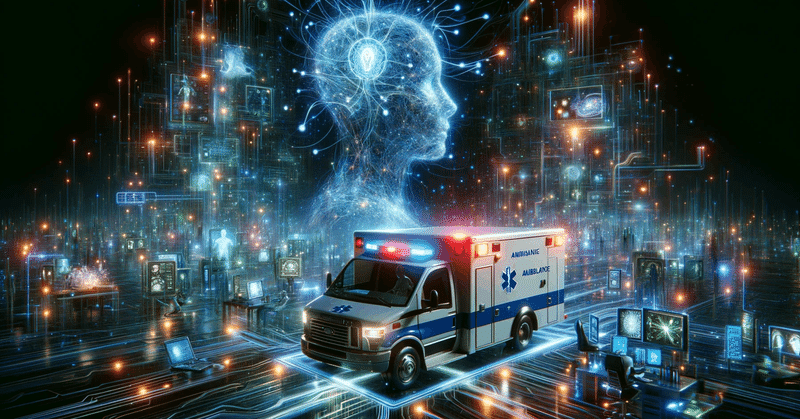
救急需要予測、AIの進化と限界気ままなリライト133
With the purpose of enhancing the effectiveness of life-saving efforts, the Fire and Disaster Management Agency is setting their sights on recruiting an exceptionally smart partner with an artificial brain. After being trained on real-world scenarios, the novice digital partner is expected to precisely forecast ambulance demand, ensuring that emergency medical services are allocated to the areas of greatest need at pivotal moments. Despite the unpredictable nature of emergency calls, a complexity that challenges the predictive capabilities of any AI, the agency is moving closer to fully realizing the AI’s potential as dependable ally, aiming to refine emergency response strategies across fire departments nationwide.
The potential of AI in enhancing ambulance demand forecasting has been showcased through a pioneering trial involving either experimental adoption or simulation testing. Up to fiscal 2022, a collaborative effort between the Fire and Disaster Management Agency, NTT as the project planner, and Nagoya City as the operational dispatcher, was devoted to evaluating the precision of AI-driven predictions through continuous performance monitoring and data logging. Leveraging the AI model's insights from historical data trends, current information, and predictive analytics, enabled a more strategic approach to planning and operational adjustments. This innovation allowed for the advanced deployment of ambulance services to areas identified as likely to experience increased demand. By doing so, it was possible to reduce the response time needed to reach individuals requiring urgent medical care, even in the absence of a direct emergency call.
Kawasaki City, Kanagawa Prefecture, has joined forces with innovative minds to harness the technological advantages of AI for ambulance demand forecasting. In April 2023, the city incorporated an AI predictive model, developed by the Chiba University startup Smart 119, into its fire department operations. This model leverages diverse databases, including weather conditions, geographic layouts, demographic trends, and patterns of seasonal illnesses, aiming to enhance the precision of its predictions across different areas. The system issues notifications at three levels of urgency to emergency service dispatchers, allowing them to adjust resources accordingly. At the highest level of alert, it prompts the organization of additional dispatcher teams, utilizing all available ambulance vehicles to their fullest extent. A spokesperson for the city's fire department remarked, "While it's challenging to quantify the exact reduction in ambulance arrival times, there's a perceptible enhancement in the overall efficiency of our emergency medical services (EMS) system."
The challenge of differentiating between life-threatening and non-urgent ambulance calls has complicated the AI’s efforts to optimize ambulance deployment. The primary goal of the AI model is to ensure that ambulances are prioritized for real emergencies, where the speed of response is directly linked to survival outcomes. The frequent use of emergency services for non-urgent situations has compromised this aim. In 2022 when the number of individuals transported by ambulance hit a record 6.21 million, with nearly 47.3 % of those calls classified as non-urgent. The surge, partly driven by the dramatized pandemic fear, disrupted the emergency services’ honorable record of maintaining an average ambulance arrival time of less than ten minutes, pushing it beyond this threshold. Research from the Ministry of Health, Labour and Welfare in Japan underscores the importance of prompt medical intervention, especially in cases of cardiac arrest. Administering CPR and defibrillation within the initial 5 to 7 minutes is more likely to enhance the chances of survival, with success rates potentially exceeding 75% if actions are taken swiftly. Beyond the critical 10-minute mark, survival probabilities decline dramatically.
この記事が気に入ったらサポートをしてみませんか?
